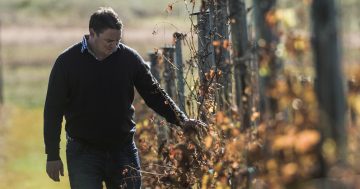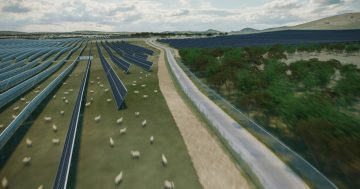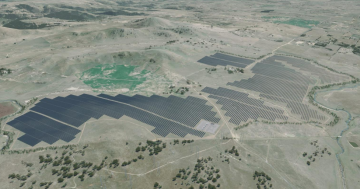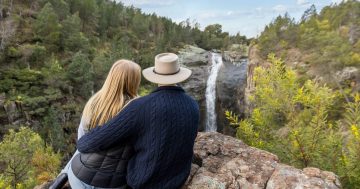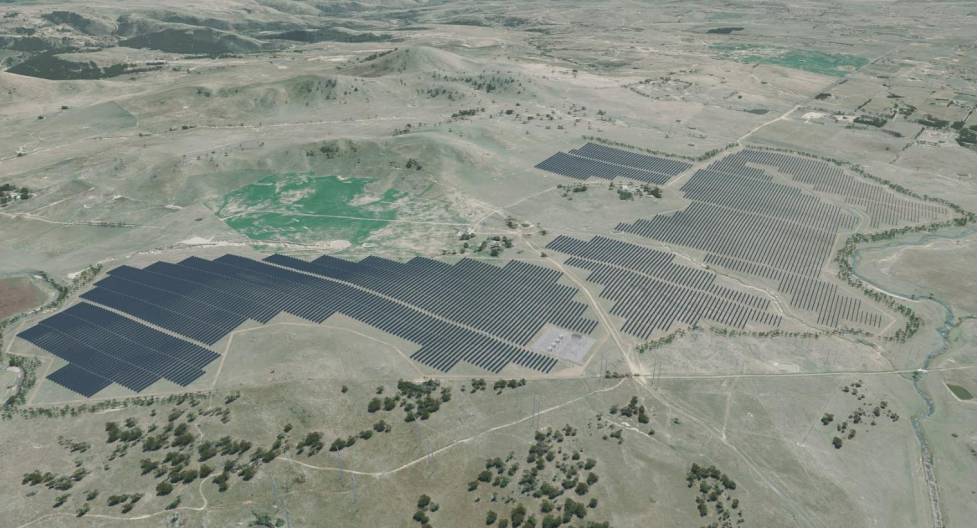
An artist’s impression showing the extent of the proposed Wallaroo solar farm. Image: New Energy Development.
A proposed 391-ha solar farm on the ACT/NSW border has added extra charge to the debate on the planned Parkwood residential development and moves to change the border to bring it into the ACT.
New Energy Development and Univergy International have lodged a development application with the NSW Government for the 100 MW Wallaroo solar farm, its 182,000 photovoltaic modules and associated infrastructure, including battery storage.
They say the $166 million project will feed electricity into the transmission network and be capable of producing enough clean renewable energy to supply about 48,000 NSW and ACT homes.
But it has sparked a flurry of objections from adjacent Belconnen residents, a prominent winemaker and Yass Valley Council.
The Belconnen Community Council, while not objecting to it outright, has raised the concerns of Charnwood and Dunlop residents have for their rural views, the environment and choice of the location.
Parkwood is the NSW component of the Ginninderry joint venture between Riverview Developments and the ACT Government and is projected to house 5000 residents.
The government has been in talks with the NSW Government for some time on changing the border so Parkwood can be part of the Territory and benefit from ACT services.

A site map showing the location of the proposed Wallaroo solar farm. Photo: New Energy Development.
The solar farm proposal adds another element to the issue, particularly as the NSW Government has declared it a State Significant Development.
Yass Valley Council says the site is within the nominal 5 km ‘buffer’ area around the ACT/NSW border established by the Yass Valley Settlement Strategy and supported by both the ACT and NSW planners.
This buffer is designed to preserve the rural amenity, landscape values and restrict urban development in these areas.
“A solar farm is more akin to an industrial activity and is inconsistent with protecting the landscape values of the locality and the rural character and amenity as envisaged in the buffer area along the border of Yass Valley and the ACT,” the council says.
It also says that the proponents have not considered the Parkwood and Ginninderry developments in their visual impact assessment.
The proponents plan to screen the solar farm from view with 17 ha of screen trees and landscaping.
Neighbouring Nick O’Leary Wines, which has just opened a new cellar-door restaurant, is worried the project will threaten its successful 14-ha vineyard and winery and reduce the value of its property.
“We strongly object to the project,” it says in its submission.
“This land is prime agricultural land, something Wallaroo is renowned for.
“We have a thriving local winery community, and the social and economic impacts would be significant if this project is approved.”
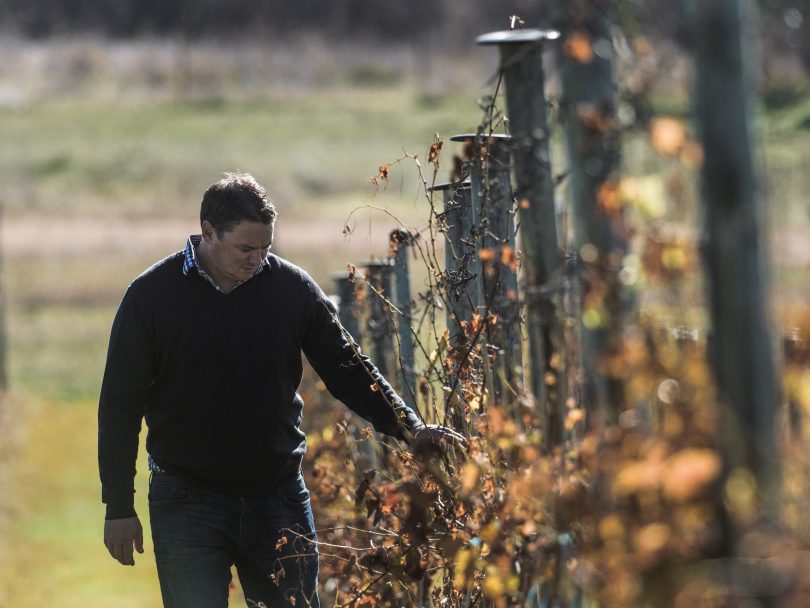
Nick O’Leary with his vines: the social and economic impacts would be significant. Photo: Nick O’Leary Wines.
The Belconnen Community Council also questions why the Yass Valley Council should manage a Community Benefit Fund the proponents will establish.
The project will contribute a one-off payment of $150,000 at the commencement of construction and a further $50,000 a year towards a grants scheme focused on renewable energy, agricultural practices, the environment and sustainable farming.
The council says this “doesn’t provide assurance that the people and land only 150 metres south of the project will receive their fair share”.
Solar farm spokesperson Ben Cranston said the proponents would respond to the council’s and people’s concerns.
“We are currently in the process of writing a response to the submissions received over the exhibition period and are looking at ways to address both council and the wider community’s concerns,” he said.
The ACT Government did not raise any matters relating to the border location in its submission, focusing on environmental matters such as weed control and protection of Jarramlee/West Macgregor Grasslands Nature Reserve, bushfire risks (particularly to do with the battery), and the visual impact on ACT residents.
A Riverview spokesperson said the solar farm would not adversely impact Ginninderry’s future development.
“Taking into account that Ginninderry’s rooftops will effectively become a 40 MW solar farm over the development lifetime, Riverview supports the use of renewable energy and Australia’s push towards net zero emissions by 2050,” the spokesperson said.












